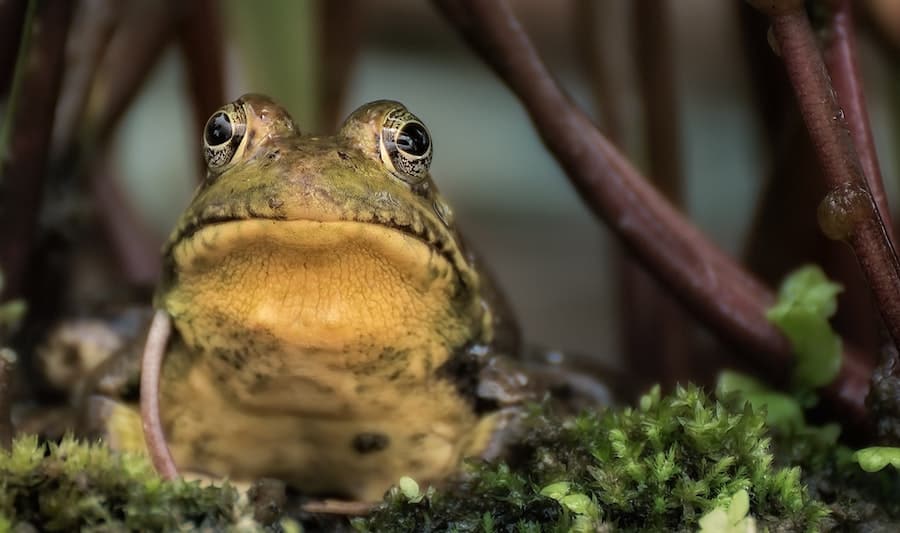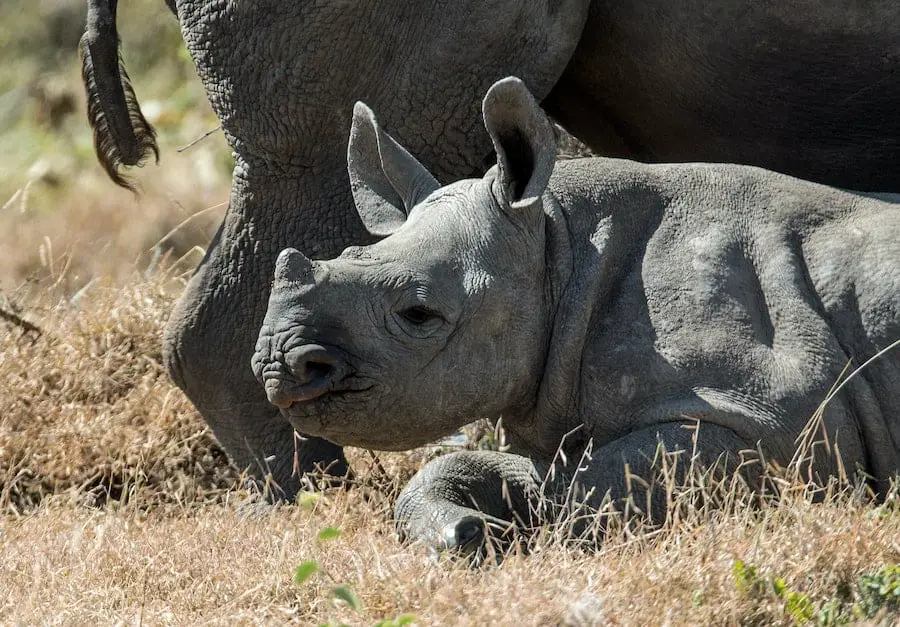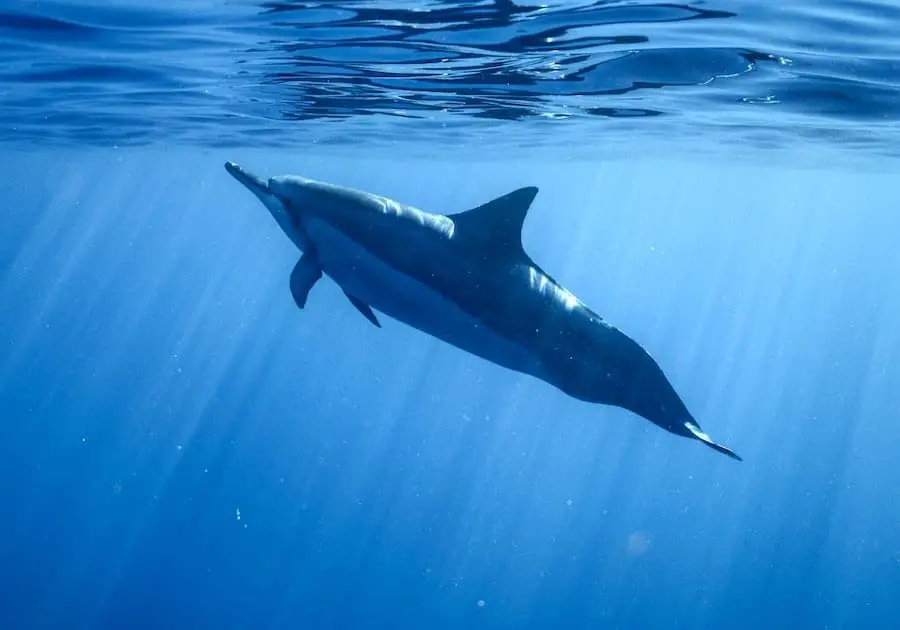We all know how important a restorative 8 hours of sleep is. Without it, humans and much of the animal kingdom couldn’t function.
You might be surprised to learn though that some animals don’t ever have the need for a peaceful slumber lasting the whole night! Here’s a quick list of what some animals actually do to gain sufficient rest…
Here’s a list of animals that do not require a full period of sleep…
- Bullfrogs – need no sleep
- Giraffes – can take short 10-minute rests
- Ostriches – sleep while appearing to be awake
- Sea urchins – take rest periods
- Swifts – sleep while maintaining flight
- Dolphins – show inactive periods
- Jellyfish – rest despite having no brain
- Fruit flies – vary from fly to fly
- Horses – sleep for a short time, lying down or standing up
- Elephants – sleep for 2 hours in the wild
- Whales – sleep while still swimming
We can categorize most animal sleep patterns in a few ways:-
Animals that require:
- No sleep
- Very little sleep
- Sleep while being awake
And we’ll go through each of these categories. So play the video below from the Ranger Planet youtube channel, or continue reading.
Here’s how scientists go about categorizing animals’ sleep behavior.
What determines sleep for an animal
How do we know if an animal is asleep at all? It’s actually a complex area.
Some animals, like the horse, will stand and look awake, but equally sometimes will lie down and look asleep. On either occasion, they are gaining a form of sleep. Others are simply “inactive” which can be interpreted as “rest”.
There are lots of nuances, but I’ll try to make sense of them here. Let’s start with how we can best determine sleep.
Circadian rhythm and homeostasis
Scientists can discern the amount of activity the brain is producing by tracking two main internal biological mechanisms. Circadian rhythm and sleep-wake homeostasis combine to regulate and manage sleep and wake patterns.
This in turn allows scientists to determine the amount of rest an animal is receiving over a given period of time and how this affects its function and survival.
An animal’s waking time is also a factor, so this will also depend if an animal is Diurnal, Nocturnal, Crepuscular, or Cathemeral. This essentially dictates when they rest vs hunt and carry out other activities.
When and where they rest can determine their ability to gain much-needed sleep… or rest!

Types of sleep for animals
We can categorize the types of sleep animals get into a few main areas:
- Deep sleep
- Paradoxical sleep (REM)
- Homeostatic regulation
- Unihemispheric sleep
- Hibernation/Torpor/Estivation
Deep sleep
Much like humans, some animals require a period of time for deeper rest. This includes many burrowing animals and is also adopted by animals that operate best at certain times of the day or night, like beavers, or spiders.
Paradoxical sleep (REM)
Paradoxical sleep is a state of sleep known as REM (rapid eye movement) sleep. Some animals maintain this state regularly and sporadically.
Homeostatic regulation
Mostly attributed to marine life, a homeostasis regulation state enables sufficient awareness of the environment and body functions – but at a reduced rate that enables the mind and body to rest and regenerate.
Unihemispheric sleep
Birds are a very common adopter of a unihemispheric sleep state, allowing them to remain in flight on long journeys while allowing sufficient rest periods.
Hibernation, Torpor, and Estivation
Hibernation is a state of deep sleep adopted for longer periods of time, mainly in order to escape harsh seasons or avoid food shortages. You can find a list of animals that hibernate here.
One common animal that loves to sleep for long periods of time is the dormouse! But this is not the same as hibernation as it’s more regular, commonly known as a state of torpor.
Estivation is a similar tactic to torpor that helps some animals to reach a lower heart, metabolic rate, and other bodily activities in order to conserve energy and escape heat or water shortages. Examples of animals that use estivation include salamanders, crocodiles, and crabs.
The need for sleep in animals
The types of sleep listed above can be further broken down into three separate categories.
- Vital – where sleep is critical for survival
- Useful – meaning sleep is helpful to maintain or improve awareness and function
- Accessory – where sleep is a luxury and lack of sleep does not impede function
And while I’ve “categorized” animals here for simplicity, it’s important to note that some animals can, and do, cross categories – depending on the situation.
For example, birds when at sea will adopt different sleep patterns to when on land.
So which animals never sleep and which ones sleep sometimes …or can sleep and be awake? Join me in finding out which species in our animal kingdom can be busy without the need for sleep as we know it!
Animals that never sleep
Time to dispel some myths. There is a lot of confusion around which animals can afford never to rest. And in fact, most studies found some signs of sleep in animals, even if that involves a period of rest.
The nearest example proven to be is the bullfrog …and even that has raised further questions on how studies were conducted.
All other animals have shown periods of inactivity which has been scientifically proven to be sleep/rest periods, or where observations have shown periods of inactivity that are likely in some way to be a state of rest.
Bullfrogs do not need to sleep?
So although there’s no rest for the wicked, it appears the bullfrog suffers the same fate!
Many scientists, in fact, do not attribute the word sleep to many reptiles, amphibians, fish, and especially invertebrates. But in fact, indicate that almost all animals conduct a rest period.
Along with this group comes the bullfrog. In scientific studies, it appeared the bullfrog’s reaction to his environment was the same whether he was resting or active. But again, there are question marks over when the bullfrog was actually tested during its potential sleep/rest cycle.
This goes some way for us to understand that the bullfrog is often promoted as an example of an animal that does not sleep in any sense of the word.
Do jellyfish sleep?
It was long believed that jellyfish do not sleep …simply as they do not have a brain and are simply a network of nerve cells. But actually, studies have shown that jellyfish also have a period of rest.
Do sea urchins sleep?
Another example of an animal that was believed to never sleep is the sea urchin.
Sea urchins have not been scientifically tested for official signs of sleep. But sea urchins do undergo periods of rest where inactivity occurs. This is more akin to a state of homeostatic regulation which involves a lowering of body activity levels that many marine animals undertake to recuperate.
Let’s move on to those animals that need very little sleep in order to survive.
Animals that need very little sleep
Here’s a list of animals that are able to sleep very little compared to us humans.
Elephants – elephants get 2 hours of sleep in the wild
Elephants can go up to 46 hours without sleep. They sleep lying down, when in groups some stay awake to guard, while others sleep. They need little sleep, averaging around 2 hours of sleep per night. In captivity, this is nearer 4 – 6 hours due to reduced dangers and pressure to find food and water.
Elephants tend to sleep fewer hours of sleep during long-distance herd movements. During these periods there’s a need to avoid lions and poachers. The matriarch is the elephant that gets less sleep due to the pressures of leading the herd.
As elephants sleep for a given period of time in one go, they are known as Monophasic sleep, this is common among many mammals and also applies to humans.
Hippopotamus
The same sleep pattern applies to similar species such as the hippopotamus, but the hippo usually sleeps for longer periods than an elephant.
Hippos can sleep up to 16 hours a day, and are mostly active at night. They can sleep adequately lying on the ground, but will often rest while seated in shallow water. And although they can hold their breath for 30 minutes underwater, they will usually sleep with their head above the waterline.

Giraffe – giraffes use paradoxical sleep
Although most animals and all mammals need to sleep to be bright-eyed and bushy-tailed every morning, the giraffe has evolved to require very little sleep.
Giraffes sleep for 30 minutes at a time often consisting of drifting in and out for 5-10 minute periods. They sleep for up to about 4 – 4.5 hours per day. Giraffes sleep lying down and curling their head around onto their body, but can also sleep standing up. They can even sleep with one eye open.
They’re not the only animals that can sleep lightly and with one eye open. This high-alert sleep strategy is sometimes employed by other animals such as fruit bats, dolphins, and mallard ducks.
It’s important that we understand that many animals rest, but aren’t necessarily asleep in the human sense.
Horses – a horse uses paradoxical sleep patterns
Similar to their long-necked African cousins the giraffe, horses have perfected the art of paradoxical sleep.
Like the giraffe, this sleep will often be with one eye open and is usually only for a short period of time.
Horses will usually close their eyes to sleep deeply when lying down, similar to how humans understand sleep. But this is usually only when protected by the herd or where they feel safe. Otherwise, like the giraffe, horses might fall under the next category of “appearing to be awake while they sleep”.
This kind of restful sleep for a horse won’t usually last long and is generally in the same kind of time span as a giraffe, so between 10 minutes and an hour.
So let’s now dive deeper into our oceans and look at whether sea creatures sleep. Let’s look at one of our largest mammals, the whale.
Whales – a whale uses homeostatic regulation to sleep
It’s important to realize that when we talk of sleep for animals, It’s often unlikely to be exactly like the kind of sleep we enjoy.
For most animals, including whales, it can best be described as a state of altered consciousness or less response to changes in their environment. This is as discussed earlier and known as homeostatic regulation,
Our most loved marine mammals such as whales, and dolphins reduce their responses in short bursts so they don’t drown.
Many whales can be seen resting motionless on the sea surface for around 30 minutes or so. If they rest any longer, they may lose too much body temperature by being inactive.
Somewhat surprisingly according to animal scientists, dolphins and killer whales mothers and babies can go without sleep for up to four months after being born.
Dolphins – adult dolphins utilize homeostatic regulation
Similar to their larger and more powerful cousins the whale, dolphins also have developed the unique craft of power napping.
They will sleep on the surface of the ocean in the same way as whales for periods of approx 30 minutes.
So although similar to humans, Dolphins need about eight hours of sleep a day, they sleep in a totally different way and they sleep almost in shifts.
They have a unique resting system which means the right brain rests while the left is awake and alert. The reason for this is similar to their larger cousins, whales, who need to make sure their body functions just enough not to drown!

Animals that appear awake when they’re asleep
Here are a couple of examples of animals that are in fact asleep, or rest to some degree, but will look like they’re awake.
Ostrich – an ostrich uses paradoxical sleep patterns
We are all familiar with the image of an ostrich resting with his head in the sand. But Ostriches do not actually sleep like this. They sit upright and rarely appear to be asleep.
So does an ostrich get any sleep as we understand it?
Although an ostrich is gaining sufficient rest and sleep time, they look like they’re awake, cleverly he looks wide awake or maybe just a little drowsy!
According to scientific studies, ostriches generally sleep in their special way around 8.5 hours a night. This makes them Diurnal creatures. With around 2 hours of that being REM sleep, rapid eye movement (which in humans relates to memory and creativity).
The ostrich, along with his similar sleeping pattern the ancient platypus, is one of the oldest animals in the world and their type of sleep is probably linked to their prehistoric roots.
Here’s a short observation video that demonstrates this in action.
Swift – the swift uses unihemispheric sleep
The swift is a remarkable bird. It spends much of its time on the wing. So they even hunt and mate while flying.
According to the New Scientist, swift’s spend an incredible 10 months of every year in flight. So it’s no great surprise that they will sleep on the wing too.
As humans expect a nice comfy bed and a full 8 hours, this super-fast little bird doesn’t sleep as we know it.
There is some discussion amongst the animal fraternity that they rest in a similar way to whales and Dolphins using homeostatic regulation. This is by switching off one half of their brain while the other half remains alert. But in fact, most birds use a system called unihemispheric sleep as described above.
According to scientific studies, Although swifts can rest in flight they sleep minimally, around 7 to 10 minutes a day while flying.
This contrasts with nearly 13 hours a day once landed. Let’s go into another winged member of the animal kingdom, the fruit fly.
Exceptions
As continued proof of the diversity of the animal kingdom, there always seems to be exceptions! So here’s one exception that has been found from studies. There are likely to be more that have simply not been studied yet.
Fruit flies – the fruit fly sleep patterns vary from fly to fly
In surprising studies, it’s been uncovered that fruit flies are unique in the fact that some of them rest for 10 hours a day. But some of them do not rest or sleep at all!
This has turned what we think we know about sleep on its head!
Scientific studies on fruit flies prove that sleep in both humans and animals can be divided into the three categories of vital, useful, and accessory.
And it appears fruit flies are unique in the fact that some of them take on board all three categories whilst others none!
The same exception category could also include rats, pigeons, and cockroaches who can exist for 20 to 30 days at a time without sleep.

image source and details of the study
More animal sleep help…
Why not take a look at the list of the most popular animals that hibernate. Find out the difference between crepuscular, nocturnal, and diurnal. Or find out why beavers are nocturnal.
